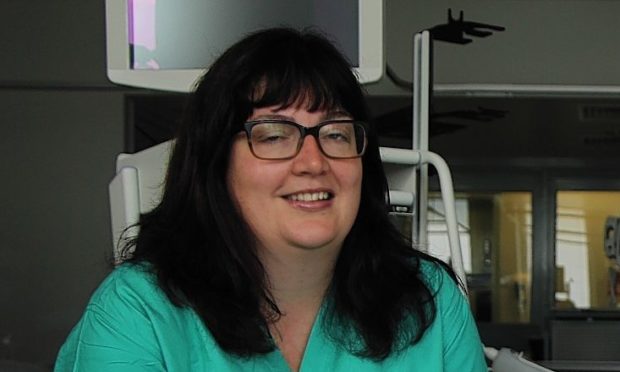The first patients in Scotland have been treated at Aberdeen Royal Infirmary by a pioneering “robot”.
NHS Grampian introduced the Robotic-Assisted Surgical System (RASS) last week following a £2.5million fundraising campaign by cancer charity Ucan, which was boosted by a £1million donation by the Scottish Government.
The RASS is now used at the hospital to carry out minimally-invasive procedures for conditions including prostate, bowel, rectal and gynaecological cancers and has so far treated three patients.
Mark Smith, 52, from the Kincorth area of Aberdeen, is only the second person in Scotland to have his prostate, which had become cancerous, removed by the robot.
The casino croupier is now almost fully recovered after the five hour operation last Thursday and is confident he will soon be back to work.
NHS chiefs hope the new equipment will help patients recover more quickly and not suffer the same side effects of the major operations.
Mr Smith was diagnosed in April after several tests and has hailed his “fantastic recovery”.
The father-of-one said: “The robot is less invasive, once the rod is actually into the area it doesn’t move again and they pass drill pieces through the tube.
“A human being would be in and out which obviously is more of a problem.
“RASS is only just starting here but I’d say it was definitely the way to go.
“The person feels an awful lot better an awful lot quicker and they seriously know what they’re doing with these robots now.”
Justine Royle, ARI Consultant Urological Surgeon and chair of cancer charity UCAN, said the surgery had improved massively in recent decades.
She said: “About 20 or 30 years ago this type of surgery was performed as an open procedure.
“The recovery in hospital would be around a week to ten days they would be at high risk of needing a blood transfusion and there were often problems after the operations.
“Now these guys recover very quickly. They are much less uncomfortable after the operation and the vision you get inside the patient is incredible.
“I think it’s going to make a massive difference to the service we provide.”
